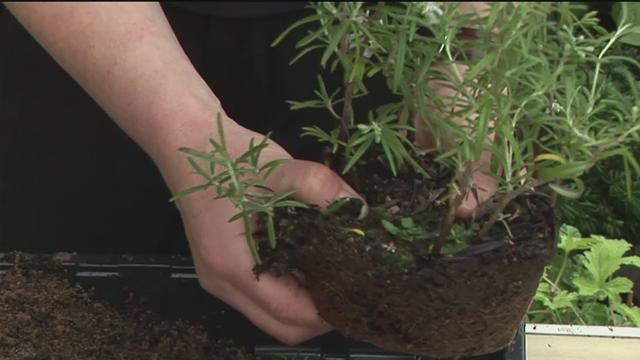How to Propagate Perennial Herbs at Home

A perennial plant is the one that lives for more than two years and returns every year without much on part of the gardener. Mostly plants, especially herbs, have shorter lives and are categorized as annuals and biennials, but there are some small flowering plants that grow and bloom over spring and summer and remain dormant during autumn and winter, before returning the following spring to emerge from the root-stock or bulb. Mostly edible herbs fall in the latter category. These include Basil, Chives, Dill, Lavender, Oregano, Mint etc.
Growing these herbs at home not only saves you a lot of money but also enhances the look of your garden. Moreover, these herbs return every year, so you won’t have to consider different options for your garden every spring. Perennial herbs can be propagated from seeds as well as from cuttings.
Things Required:
– Herb seeds
– 4-inch pots
– Potting soil
– Sand
– Mister
– Razor blade
– Scissors
– Hormone rooting powder
– Planting tray
– Perlite
– Knife
– Garden clippers
– Shovel
– Small garden trowel
Instructions
-
1
Propagation from seeds
When growing a perennial herb from seeds, it is always recommended you start indoors, in well-drained pots and transplant the seedlings outside once they are hard enough to handle. Take a small pot and fill it with rich soil, a mix of soil, compost and sand, leaving headspace of 2 to 3 inches to facilitate watering. Sprinkle the seeds on the surface of the pot and cover them with a thin layer of soil. Water the pot and make sure it is not left under direct sunlight. Keep the soil moist until the seeds germinate, and move your seedlings outside after the last frost. -
2
Propagation from cuttings
Take cuttings from well grown herbs using a sharp garden shear or a razor blade. Remove last leaves near the cut end using a sharp knife or pair of scissors. Dip the cutting in the rooting powder and plant it in a pot containing an even mix of perlite and sand. Water the cuttings regularly until you observe new growth in about 18 to 21 days, then transplant them to individual pots. Move the cuttings outside only after their root system has established properly.


